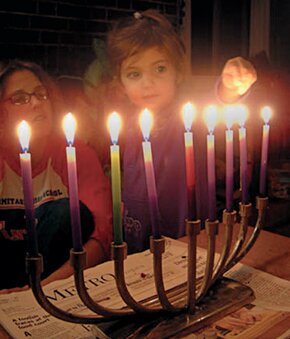| Chanukah: a historic overview and modern practice |

|
|
Chanukah is the first non-biblical holiday to be incorporated into the Jewish calendar. The holiday fi nds its roots in real historical events occurring in the Graeco- Syrian Empire around 175 B.C.E. with the assumption of the throne by Antiochus. He tried to get the Jews to assimilate and disposed of their High Priest and replaced him with a Hellenized Jew.
A decree was soon issued that all people were to serve pagan gods and the study of Torah was forbidden. In 167 B.C.E. a statue of Zeus was erected in the Temple in Jerusalem and pigs were sacrificed there. Idols were erected throughout Judea. Antiochus soon escalated his campaign and required conversion of the Jews or death. Many Jews chose to die rather then commit idolatry.
Mattathais, a Jewish priest, along with his fi ve sons began a revolt. The revolt was actually commenced when Mattathais slew a fellow Jew who had participated in the sacrifice of a pig. The band of Maccabees and their supporters fled into the mountains and engaged in guerilla-type warfare against the Syrians. The revolt was successful in large part to the leadership of his middle son, Judah Maccabee. The war was a civil war of traditional Jews fighting against Hellenized or assimilated Jews.
Please login or register to see the full article
|



















